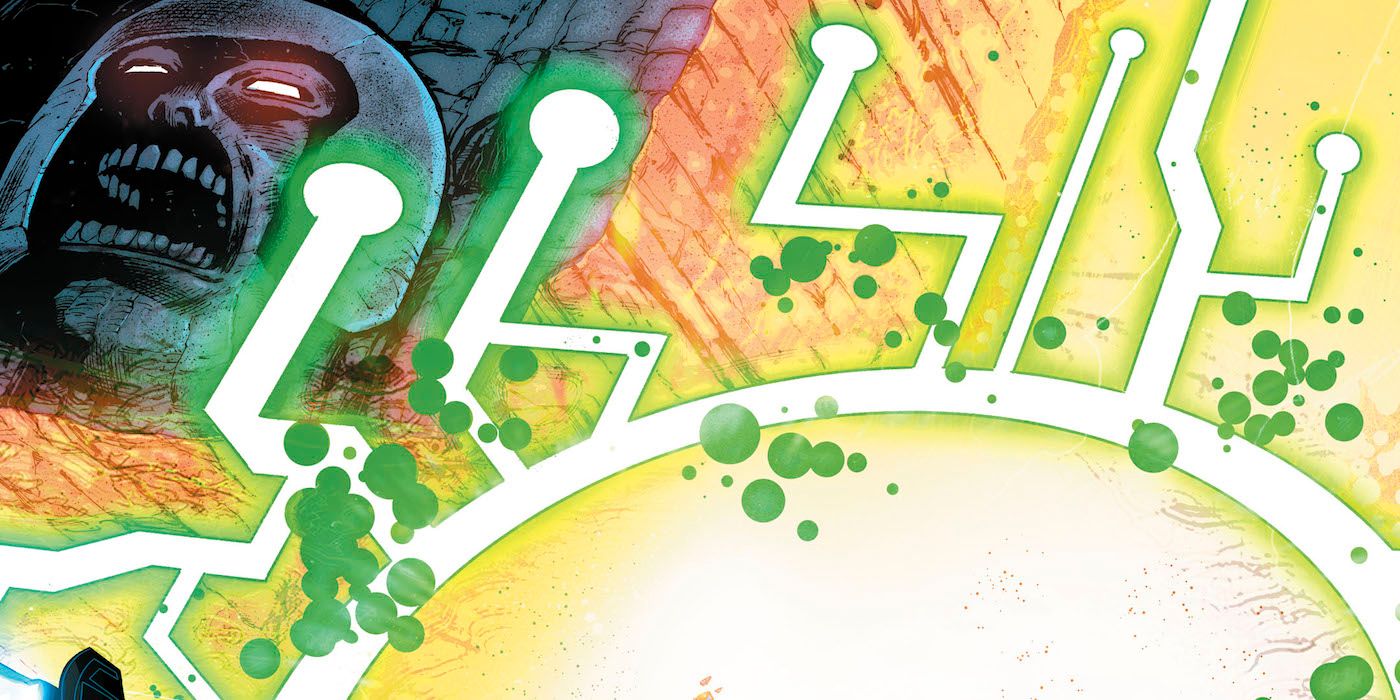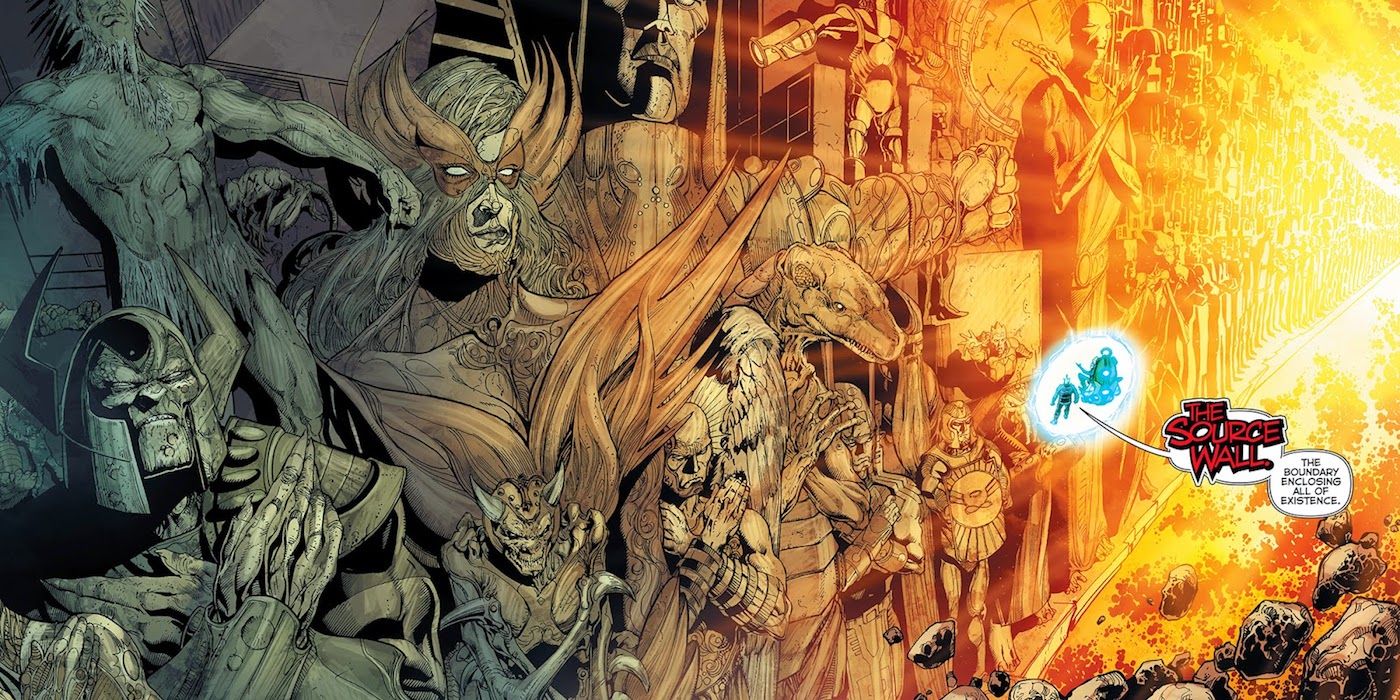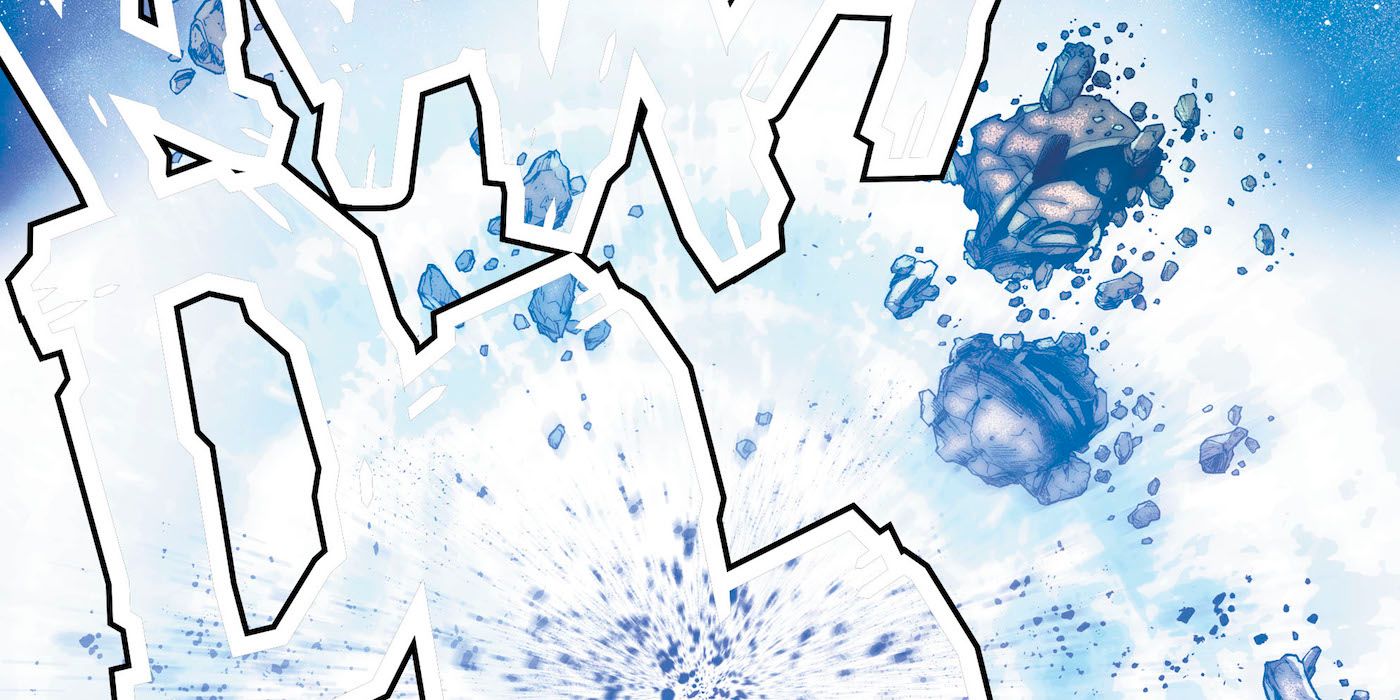Over the years, the Source Wall has been one of the most revered constructs in DC Comics lore. Seen as a membrane that separates the DC Multiverse from mysterious elements beyond, it's undergone a few different retcons over the years, but one constant is that the wall needs to remain intact to protect the integrity of reality as we know it.
RELATED: Justice League #15 Reveals the Creator of DC's Previous Multiverse
However, as of last week's Justice League Annual #1, it's been totally shattered, which, as expected, has put the multiverse at risk. With that in mind, let's look at the wall's evolution over the years, how it crumbled into nothingness and what this means for the future.
The History of the Great Source Wall
While the idea of a protective barrier for the DCU was conceptualized by Jack Kirby, it's really Walt Simonson and Chris Claremont who conceived of the Source Wall for a crossover between the New Teen Titans and Marvel's Uncanny X-Men. Visually, as we'd see in several subsequent cosmic stories (as well as modern cartoons like Justice League Unlimited), the wall would be represented as a rocky structure (think of China's Great Wall but with a mountain-esque aesthetic) with various galactic entities embedded in it.
RELATED: Justice League Annual Delivers a Death Blow to the DC Multiverse
This would include the Old Gods; New Gods like Yuga Khan, his son Darkseid and Highfather; heroes such as Superman; villains like Gog, Superboy Prime and Black Hand; and a variety of other DC deities. Jim Corrigan (the Spectre) even met what he perceived to be God there. The wall's concept was tweaked in the 2007 build-up to Final Crisis, where each of DC's 52 universes were protected by a wall, and in between them there existed a "bleed," forming a web-like structure where folks could traverse each bleed and cross into different realities.
A further update came in Death of the New Gods, where the wall housed the souls of slain New Gods and served to prevent the Anti-Life entity from corrupting the multiverse. In the New 52, it was said that the other side of the cosmic structure contained the very essence of life (which is what powered Kyle Rayner as a White Lantern in Brightest Day). In essence, while we can see how different writers held different perspectives on the wall, what's clear is that it is essential for survival.
Cracks Lead To Chaos
However, in DC Rebirth, everything changes once more, and, sadly, not for the better. By the end of Dark Nights: Metal, readers discovered the wall separates the multiverse from a Dark Multiverse, which Batman accidentally unleashes. With evil versions of himself -- disciples of Barbatos -- making their incursion into the DCU, the Justice League uses the mysterious 10th metal (the element of life) to push them back to the darkness, but in the process they crack the Source Wall.
NEXT PAGE: Can the DC Multiverse Exist Without the Source Wall?
Thereafter, in Justice League: No Justice, the League and the Green Lanterns attempt to seal the breach, but we now find out it's the gate keeping the Omega Titans from crossing over and consuming the multiverse, too. The heroes would prove resilient, but after stopping these cosmic powerhouses, there's still no permanent solution to sealing the cracks, which culminates in seven mysterious forces leaking out into the DCU.
As a result, the Totality, a battery for creation, also leaks out, only to be captured by Lex Luthor and the Legion of Doom. They figured the Source Wall was really protecting the ability to reshape the multiverse as they see fit. With this seeping energy now being used on Earth by Mother Blood and her cult, it's became resoundingly clear that, by trying to protect their reality, the League doomed everyone else's, which is why the rest of the cosmos now views Earth as a wayward cop precinct.
It All Ends With A Bang...
Everything now comes to a head with the revelation that, among all the Source Wall was storing, the most important is actually Perpetua, the goddess of the previous DC Multiverse. Apparently, her creation was destroyed and she was imprisoned in the wall, but thanks to these cracks her tools have been leaking out bit by bit. It began with her sons, the Monitor and Anti-Monitor in Crisis on Infinite Earths, and reaches a fever pitch with the Totality, which continues to affect space and time. Most of all, though, the one thing that shouldn't have escaped finally has: Perpetua herself.
RELATED: Darkseid Is Creating His Own Version of a Classic DC Weapon of Mass Destruction
When the League tries to seal the wall for good using Starman and Kendra Saunders (Hawkgirl), Lex and Brainiac hijack the mission using the Totality, managing to free and kidnap the unconscious goddess. But in extracting her, the Source Wall is eviscerated. Now, this has happened before in DC history, but there's a more permanent and ominous feeling this time around, especially because whatever was on the other side is now loose in full. Who knows what aspects of the Dark Multiverse will spill over again, not to mention all the villains stored may well be free to roam again.
New Genesis and Apokolips were the first planets to disappear, and, without a wall, Darkseid is already gearing up for his own crusade to rebuild the multiverse thanks to the Other Box he found in Justice League Odyssey. Even if he's stymied in his mission, Lex is looking to harness the Totality and become a creator himself.
Of course, we can't forget it's just a matter of time before Perpetua awakens from her slumber. If the wall's absent, she'll have free rein to destroy the multiverse that replaced hers, and this is where the true danger lies. With no more prison, Perpetua can become a vengeful goddess, going on a rampage to fix what was done to her and, ultimately, this paints another apocalyptic crisis for the DC Multiverse.




